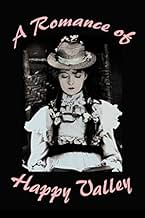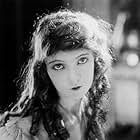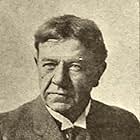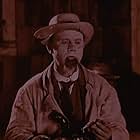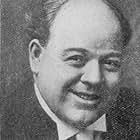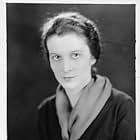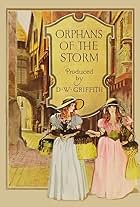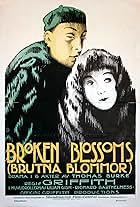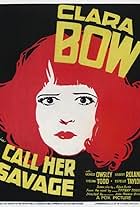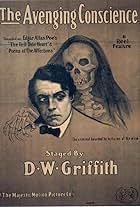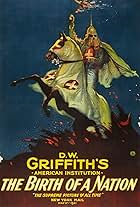John Logan leaves his parents and sweetheart in bucolic Happy Valley to make his fortune in the city. Those he left behind become miserable and beleaguered in his absence, but after several ... Read allJohn Logan leaves his parents and sweetheart in bucolic Happy Valley to make his fortune in the city. Those he left behind become miserable and beleaguered in his absence, but after several years he returns, a wealthy man.John Logan leaves his parents and sweetheart in bucolic Happy Valley to make his fortune in the city. Those he left behind become miserable and beleaguered in his absence, but after several years he returns, a wealthy man.
Carol Dempster
- Girl John Logan meets in New York
- (uncredited)
- Director
- Writers
- All cast & crew
- Production, box office & more at IMDbPro
Storyline
Did you know
- TriviaBelieved lost for almost 50 years, a print was discovered in 1965 in the State Film Archives of the Soviet Union, which donated it to the Museum of Modern Art.
Featured review
Some modern viewers understandably have a hard time sitting with silent films, and among other reasons, some instances especially epitomize the notion of "simpler entertainment for a simpler time." Intertitles may directly address the audience, or speak very exactly to what is happening in or represented by a scene, at the same time that the storytelling in some cases is as lighthearted as drama can be without being labeled as "comedy." Plot or character development may be very direct and uncomplicated. That's to say nothing of depiction of old-fashioned or downright antiquated values, and of culture and lifestyles far removed from our own. I think it's safe to say that all these facets are present in 'A romance of Happy Valley' in varying proportions, right down to the core of the narrative; I love the silent era, and still there are parts of this that I watch while barely suppressing derisive laughter of disbelief. Much as fantasy or science fiction may take us to an entirely different world, old titles like this might require the most robust suspension of disbelief to engage with.
Some silent movies are among the very best movies that have ever been made; others are well done and entertaining, but decidedly quaint. Given all the elements I've described, this feature is among the latter - but even at that, more than not it's a pleasure to watch, and all the more so for devotees of early cinema who recognize how such early pictures were made. The sets, costume design, and hair and makeup work are terrific, certainly helping to ease viewers into the experience. Films in the 1910s and 20s weren't necessarily known for particular nuance in the acting, but I think everyone here rather successfully imbues welcome heart and personality into their roles, letting the tableau feel meaningfully real even as other aspects might threaten our suspension of disbelief. To that point, too, while filmmaker D. W. Griffith has an asterisk or two on his legacy, there's no disputing that he was a leading icon of the industry in its earliest days, and he again proves why here with excellent, mindful direction orchestrating every shot and scene. Moreover, between Griffith's direction and the screenplay he penned with Mary Castelman, there some nicely subtle, clever inclusions that in and of themselves add much to the feature.
Mind you, for whatever value this can claim, and neverminding its idiosyncrasies, there are specific faults I would cite that weigh against it. The emphatic religious language seems very heavy-handed even for the narrative the feature has to impart. One would be remiss not to note the tawdry, tiresome use of blackface (to which Griffith was no stranger). More substantively: Among other subjective faults I would not count the tonal shift between the approximate first and second halves; on the other hand, all those factors I initially described above don't entirely hold true as the tone shifts, and that includes how intertitles are used. There comes a point when the storytelling becomes a tad muddled, and the production struggles to elucidate the precise course of events or who characters are. That goes for too much of the second half, which has fewer intertitles, choppier sequencing, and examples of emphatically weak lighting. None of this is helped by having two actors who look alike being dressed up in ways that make them even more indistinguishable from each other. While the broad story beats are clear enough, I don't believe the movie is entirely effective in communicating the movement from A to B to C, and the result feels like Movie Magic - or worse, perhaps the undeveloped storytelling of a young child ("This happened. And then this happened. The end."). If the writing of the backend were tightened, providing a more lucid narrative, the whole would have been drastically improved.
Considered overall I believe 'A romance of Happy Valley' is roughly on par with the bulk of its contemporaries - not super remarkable, but suitably well done despite glaring issues (the blackface), ham-handedness and outmoded norms, and other matters. The uneven dispensation of its storytelling is where I have the biggest problem, but then, maybe I'm being too cynical. In any event, the fact remains that when all is said and done this is surely a piece mostly likely to appeal only to those who are already enamored with the silent era, and other audience members can probably just move on. Even then there are many other titles that indisputably earn a higher priority, but if you happen to come across this one and are willing and able to parse with distinct imperfections, then it's not a bad way to spend 76 minutes.
Some silent movies are among the very best movies that have ever been made; others are well done and entertaining, but decidedly quaint. Given all the elements I've described, this feature is among the latter - but even at that, more than not it's a pleasure to watch, and all the more so for devotees of early cinema who recognize how such early pictures were made. The sets, costume design, and hair and makeup work are terrific, certainly helping to ease viewers into the experience. Films in the 1910s and 20s weren't necessarily known for particular nuance in the acting, but I think everyone here rather successfully imbues welcome heart and personality into their roles, letting the tableau feel meaningfully real even as other aspects might threaten our suspension of disbelief. To that point, too, while filmmaker D. W. Griffith has an asterisk or two on his legacy, there's no disputing that he was a leading icon of the industry in its earliest days, and he again proves why here with excellent, mindful direction orchestrating every shot and scene. Moreover, between Griffith's direction and the screenplay he penned with Mary Castelman, there some nicely subtle, clever inclusions that in and of themselves add much to the feature.
Mind you, for whatever value this can claim, and neverminding its idiosyncrasies, there are specific faults I would cite that weigh against it. The emphatic religious language seems very heavy-handed even for the narrative the feature has to impart. One would be remiss not to note the tawdry, tiresome use of blackface (to which Griffith was no stranger). More substantively: Among other subjective faults I would not count the tonal shift between the approximate first and second halves; on the other hand, all those factors I initially described above don't entirely hold true as the tone shifts, and that includes how intertitles are used. There comes a point when the storytelling becomes a tad muddled, and the production struggles to elucidate the precise course of events or who characters are. That goes for too much of the second half, which has fewer intertitles, choppier sequencing, and examples of emphatically weak lighting. None of this is helped by having two actors who look alike being dressed up in ways that make them even more indistinguishable from each other. While the broad story beats are clear enough, I don't believe the movie is entirely effective in communicating the movement from A to B to C, and the result feels like Movie Magic - or worse, perhaps the undeveloped storytelling of a young child ("This happened. And then this happened. The end."). If the writing of the backend were tightened, providing a more lucid narrative, the whole would have been drastically improved.
Considered overall I believe 'A romance of Happy Valley' is roughly on par with the bulk of its contemporaries - not super remarkable, but suitably well done despite glaring issues (the blackface), ham-handedness and outmoded norms, and other matters. The uneven dispensation of its storytelling is where I have the biggest problem, but then, maybe I'm being too cynical. In any event, the fact remains that when all is said and done this is surely a piece mostly likely to appeal only to those who are already enamored with the silent era, and other audience members can probably just move on. Even then there are many other titles that indisputably earn a higher priority, but if you happen to come across this one and are willing and able to parse with distinct imperfections, then it's not a bad way to spend 76 minutes.
- I_Ailurophile
- Feb 27, 2023
- Permalink
Details
- Release date
- Country of origin
- Languages
- Also known as
- The Romance of Happy Valley
- Production company
- See more company credits at IMDbPro
- Runtime1 hour 16 minutes
- Color
- Sound mix
- Aspect ratio
- 1.33 : 1
Contribute to this page
Suggest an edit or add missing content

Top Gap
By what name was A Romance of Happy Valley (1919) officially released in India in English?
Answer
